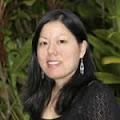
Featuring: Clarkston Central School District
9500 students, 815 teachers
In 2008, they were looking for solutions (LMS) that put students at the center, something that was flexible and would grow with the school district.
They developed two separate domains one for staff and one for students. Staff is authenticated through single sign on (active directory). The staff site allows teachers to easily and securely share items for collaboration (i.e. lesson plans). Both sites use docs, sites and calendars. Staff has video and students will have gmail accounts.
Calendar - Started with the calendar tool for teachers because they are comfortable with that, least intimidating. School district (e.g. Math) calendar items can be easily added (subscription) to teachers personal calendar. Using Calendar as a curriculum mapping tool to add details to yearly plan with links to additional resources.
Google Docs - 10 people simultaneously collaborating, spreadsheets 50 people. Use template model to allow teachers to make model lessons their own. Also using it for standards-based report cards.
Archives:
Recorded Video
Published Slide Presentation

Comments